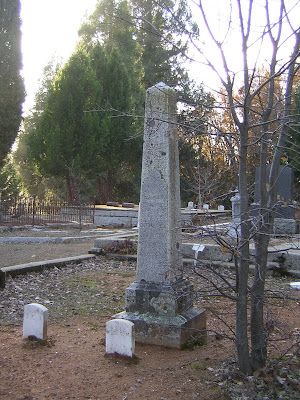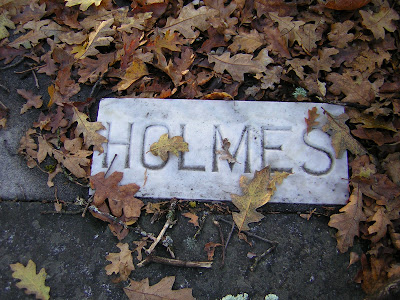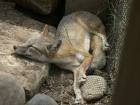I know I’ve been away for a while so to make up for it, I give you a twofer: Pilarcitos Cemetery and Oddfellows Cemetery, both in Half Moon Bay.
Half Moon Bay is a very historic little coastal town just south of San Francisco. During the days of Prohibition, rumrunners used its many beaches and coastal pockets as receiving grounds for illegal booze on its way to San Francisco. Now it is known mostly for its fishing, expensive homes with ocean views and annual Pumpkin Festival.
According to a plaque inside Pilarcitos Cemetery, what is now Half Moon Bay was once known as San Benito.
“The first Roman Catholic church in San Mateo County’s oldest town, San Benito (better known as Spanishtown and later to become Half Moon Bay), was built in this cemetery in 1856. The land was purchased from Tiburcio Vasquez, who was granted Rancho Corral de Tierra in 1840.
Wandering through these grounds one can find the names of the many families who influenced the founding of Spanishtown. Prominent among these are the early Spanish, Portuguese, Irish and Italian pioneers.
May we who lie here rest in peace.
This plaque presented to the Spanishtown Historical Society
1973
IN MEMORY OF GEORGE E. DUNN, SR. 1880 – 1971”
Nice cross with an IHS. These initials are derived from the first three letters of Jesus’ name written in Greek: Iota, Eta, Sigma. The flowers look like lilies to me. Lilies stand for purity.
Here’s a very sad tombstone. This is probably a mother and daughter, both carrying the same name and buried together for all time. The ivy is associated with immortality and fidelity (ever try to kill it?) and the shape of its leaves invokes the Holy Trinity.
This fellow was a Woodsman of the World. I hear these tombstones are considered rare and hard to find, but there seem to be a lot of them in this area.
Here’s another example of a cast zinc monument. The top was broken off and it is hollow inside.
Nice weeping willow, the tree of mourning.
Calla lilies are also frequently used to express mourning. You find them on tombstones a lot and at funerals in the flower arrangements. The one used at funerals are almost exclusively white, although the flower comes in many colors, including yellow and red. There are also some lilies of the valley mixed in here.
Here’s a sheaf of wheat, something I haven’t seen too much of. It appears on the gravestones of people who had lived a long and fruitful life, usually over seventy years.
While Pilarcitos Cemetery is still in use and is well-maintained, its neighbor, the Oddfellows Cemetery, seems abandoned and neglected. It is one of the saddest places I have ever been. Some of the headstones are crooked and broken, the lids of the vaults are caving in, and the graves are wildly overgrown.
These branches probably blew down a couple of years ago during a particularly bad wind storm and no one has bothered to remove them.
No one comes by to freshen these flowers any more.
But there is still beauty to be found here.
This unusual headstone caught my eye.
The Independent Order of Odd Fellows is descended from the British fraternal order established in the 1700s. The Order came to America in 1819 and the word “Independent” was added to its name by the parent organization, probably to differentiate it from its British counterpart.
“Odd Fellowship became the 1st national fraternity to include both men and women when it adopted the beautiful Rebekah Degree on September 20, 1851. This degree is based on the teachings found in the Holy Bible, and was written by the Honorable Schuyler Colfax who was Vice President of the United States during the period 1868-1873. Odd Fellows and Rebekahs were also the first fraternal organization to establish homes for our senior members and for orphaned children.”
While there are some newer graves here, the vast majority of them are older. This place reminds me of why I do not wish to be buried. I do not want to lie forgotten in some desolate place with only dried flowers and tall weeds for company.



















































































